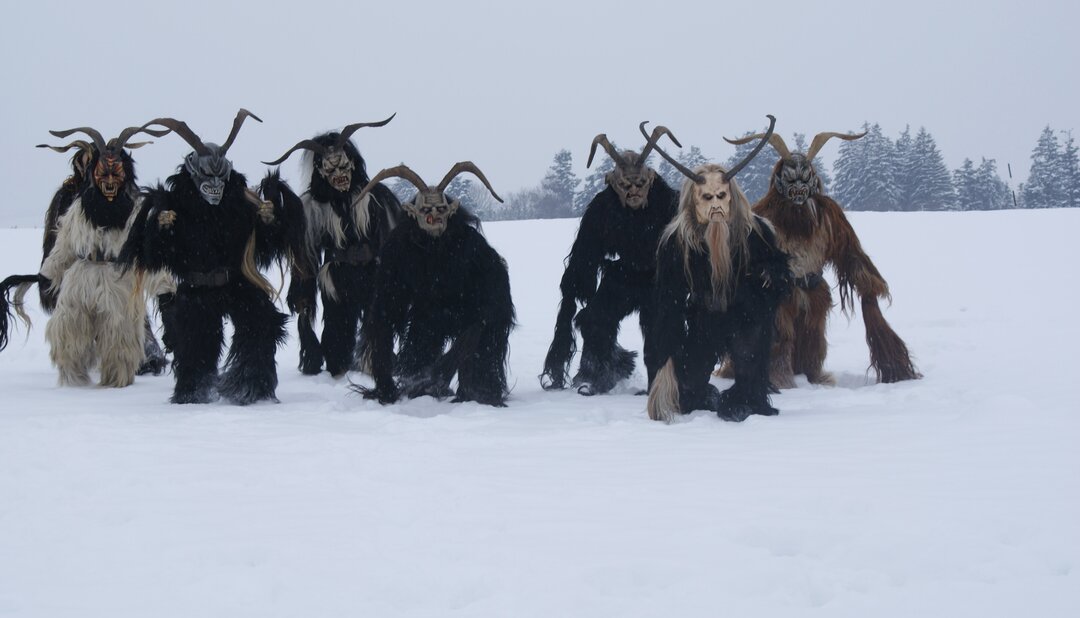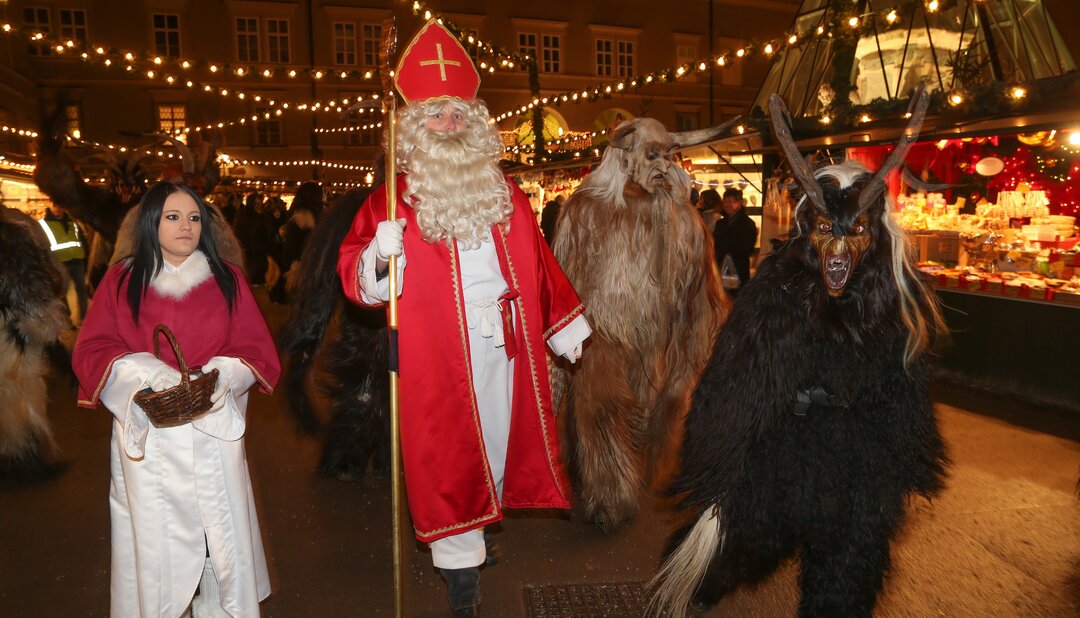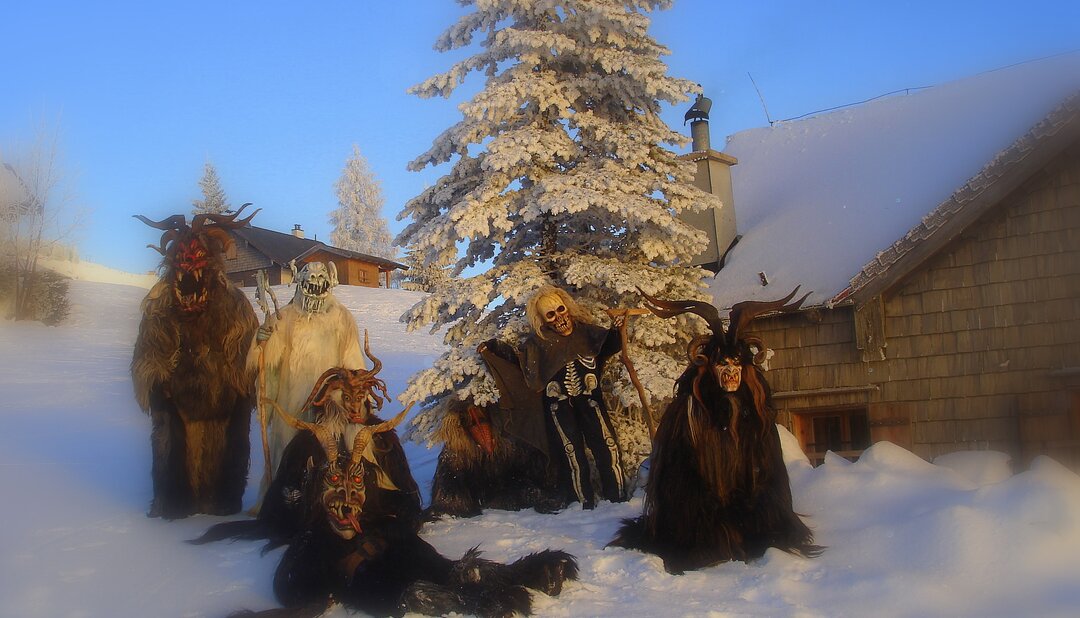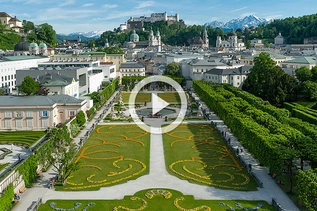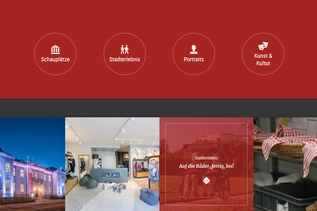
Krampus- and Perchten Parades in Salzburg
Around Saint Nicholas’ Day on 6 December will take place numerous traditional Krampus and Perchten parades in Salzburg. Sporting hand-carved wooden masks, shaggy pelts and heavy bells, these wild figures are said to scare away the dark spirits of winter. A living example of centuries-old folk customs.
Wild and Eerie Characters: Krampus- and Perchten Parades in Salzburg
The wild jangling of bells, shaggy pelts, curved horns and terrifying masks: When Krampus and Perchten run down the street, growling, half dancing, half stamping, every single spectator is left just a little unsettled. Krampus- and Perchten parades truly are an unforgettable experience, as much a part of Salzburg’s Christmas season as the famous Christkindlmarkt and the almost meditative Advent Singing. From the end of November until the beginning of December, you can also experience this unique folk custom in the City of Salzburg itself. While no one would claim Perchten parades are peaceful, they will definitely leave you with lasting memories. An ancient tradition you can only experience in this part of the Alpine world.
Fiendish Figure: Krampus
Krampus- and Perchten parades look back on a long tradition in Austria. That said, Krampus and Percht are far from being identical figures. In Alpine tradition, Krampus is a devil-like creature who accompanies Saint Nicholas on 6 December. In contrast to St. Nick’s gift bearers, Krampus comes along with chains and a switch, looking for those children who weren’t as good as they ought to have been in the past year. It is said that “Krampus” got his name from yet another attention-getting feature, his long claws. “Grampa” is the Italian word for “claw”. The Krampus tradition existed throughout the Habsburg empire and in neighboring regions.
Percht, Schönperchten and Schiachperchten
Perchten, for their part, are folk figures we only encounter in the Alpine regions of Bavaria and Austria. According to various sources, their name probably derives from the legendary character “Perchta” (also: “Berchta”). If you pay close attention, you will notice there are actually two different types of Perchten: the “good” Schönperchten and the “evil” Schiachperchten, whose masks are especially scary. Their artistically carved masks, incidentally, have all been made by hand. Members of both groups of Perchten each carry one or more bells, intended to help drive away the winter.
According to tradition, Perchten only appear during Twelvetide between winter solstice on 21 December and Epiphany on 6 January. Nowadays, however, Perchten runs take place throughout December. Perchten marchers from Gastein are known to have paraded during a visit of Emperor Ferdinand I back in 1837. No surprise, then, that Gastein Perchten have been proud members of the UNESCO World Intangible Heritage List since 2011.
The folklore “boom” of the 20th century also resulted in the distinction between Krampus and Percht become more and more blurred. We even see the development of so-called “Krampusperchten”, along with the birth of numerous local groups, known as “Pässe”, celebrating the tradition. There are around 200 such Pässe in Salzburg alone.
Living Tradition
It is said that, at every Perchten parade, there is actually one real Percht in the masses. And when you observe these wild characters from a safe distance, as the many lights reflect off their creative masks, you sometimes do have to take a second look: Did I just see an ear twitching there? Or was it just the wind? Isn’t there always some kernel of truth to every legend? Now, Percht, Krampus, the Krampusperchten and the witches have already passed us by. But we will be lining the streets again next year, as the Pässe parade by, provoking occasional shrieks from spectators. And perhaps then we will be able to pinpoint precisely which one of the Perchten is “the real thing”.

